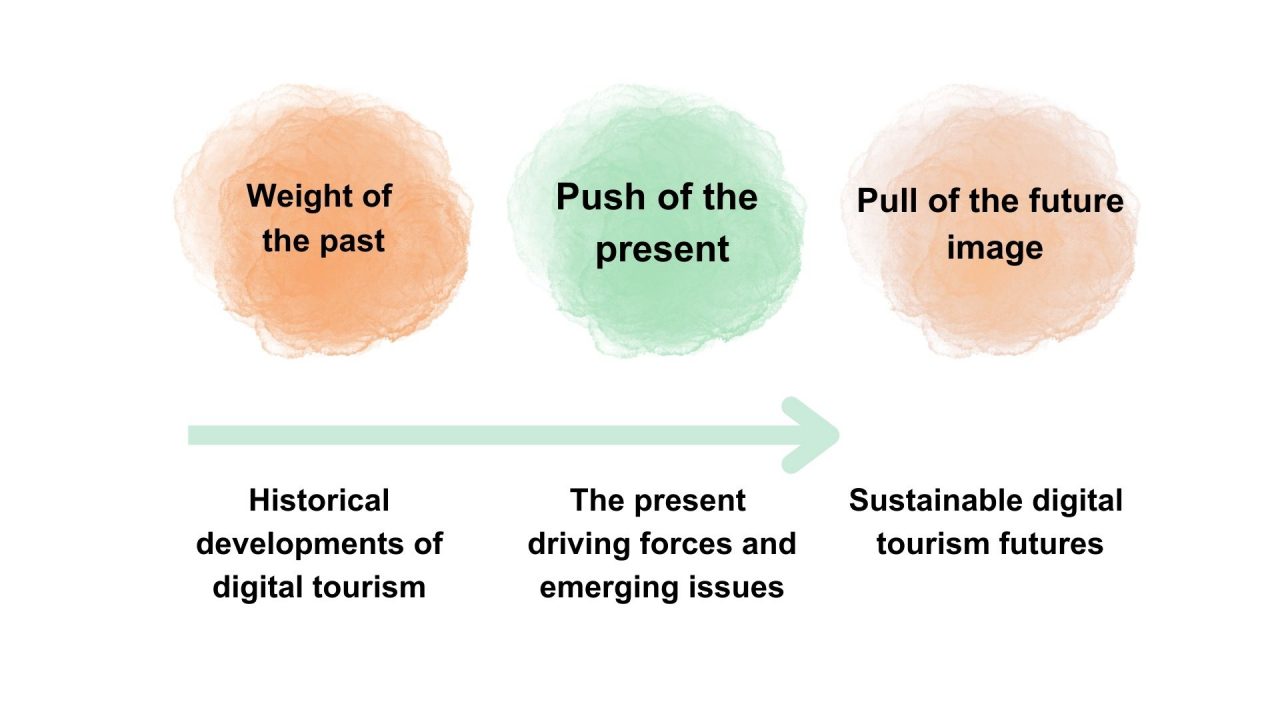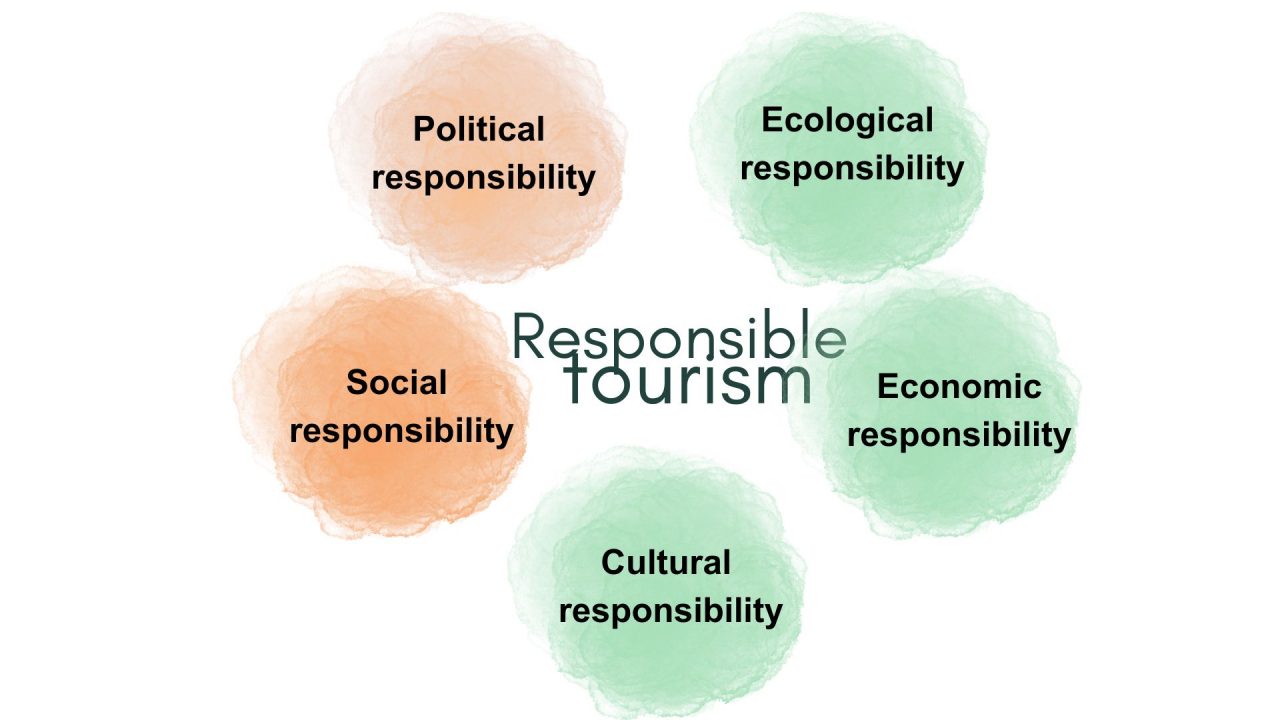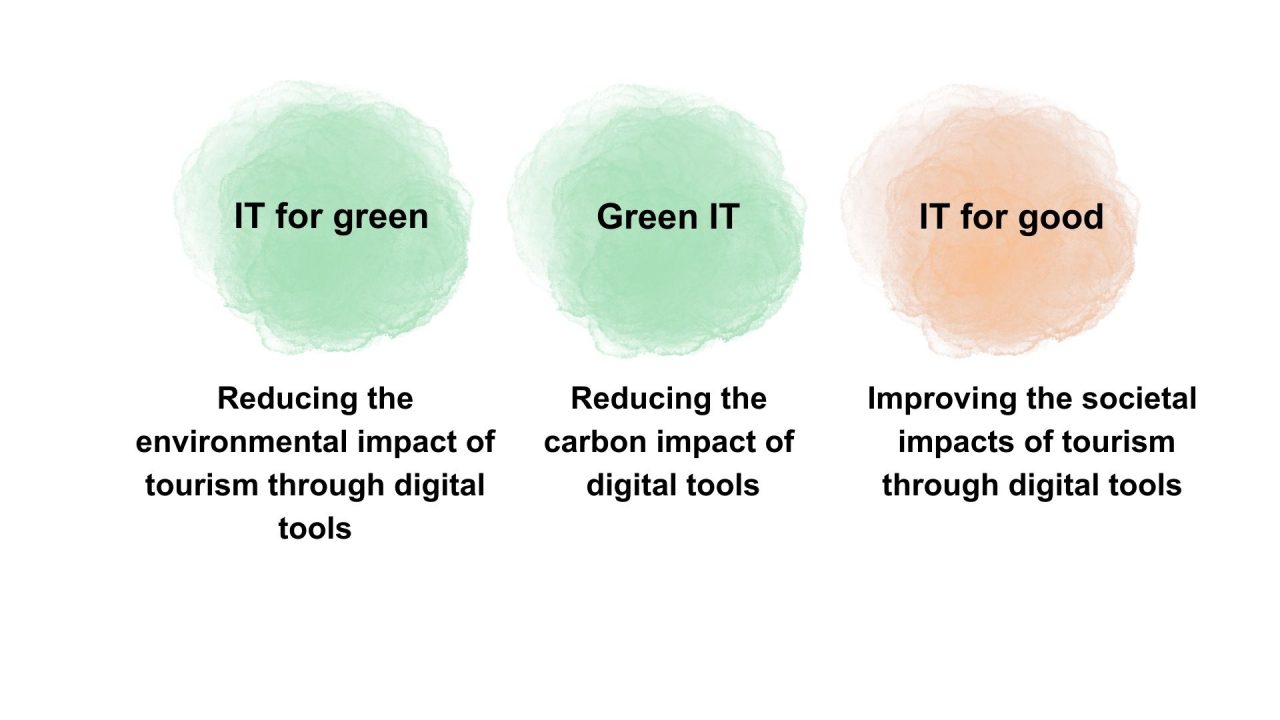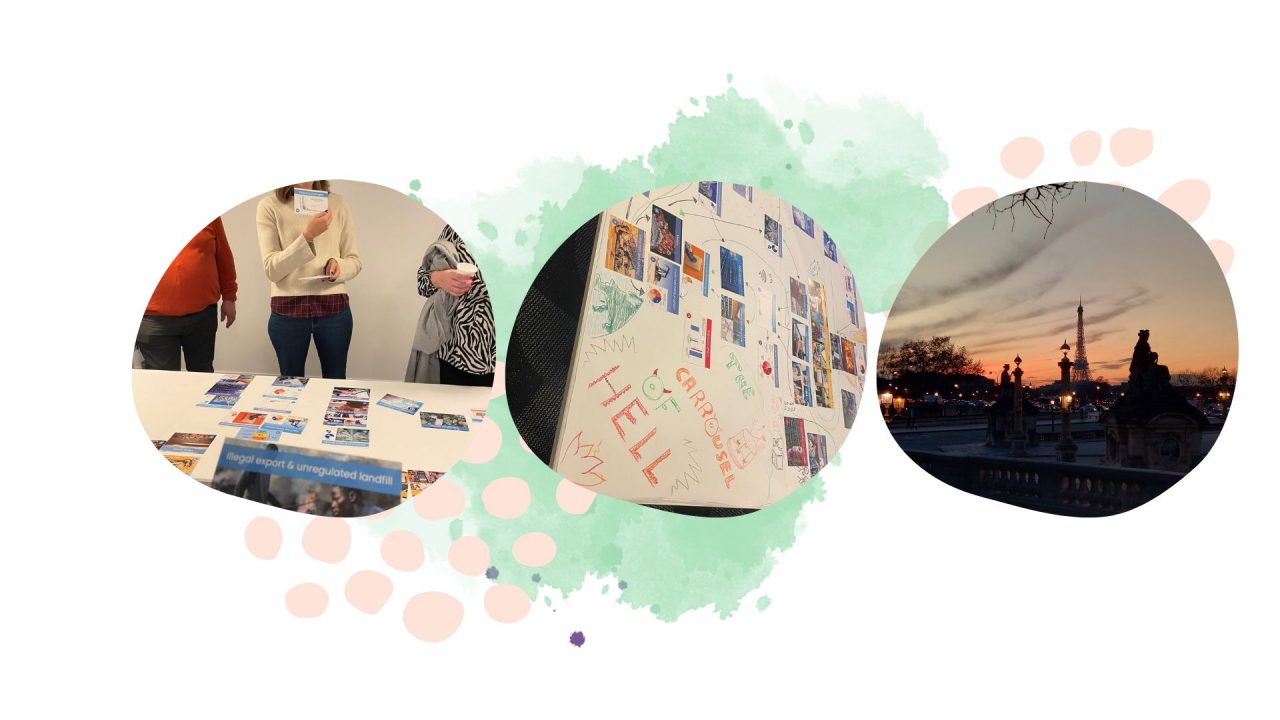Anu Harju-Myllyaho, M.Soc.Sci, Senior specialist, Responsibility in business and services, Lapland University of Applied Sciences
Anna Veyrenc, Head of the Tourism Platform, Paris & Co. Welcome City Lab
Digital development in tourism
How many digital screens do you have in your house? Also counting the screens that you are not actively using? We guess that the number is surprisingly high for many of us. At least it was surprising for many of us who participated Digital Collage Workshop in Paris. The workshop was organized as a part of the Tourbit project partner meeting. Certainly, the digital world has become something that pervades our lives in both work and leisure time.
In tourism, digitalization has for long played a central role. Digital tourism technology has the potential to create new opportunities for growth and development and it motivates tourism companies to adopt innovative technologies in their products and services. The European co-funded project Tourbit (Fostering digitalization of European tourism SMEs) understands that digitalization opens opportunities but, like other global forces in the industry, it poses many challenges for tourism small and medium sized companies (SME)s.
Project Tourbit aims in fostering skills and capacity and boosting the uptake of digitalization. Furthermore, the aim is to promote resilient and competitive SMEs and the transformation of the European tourism sector. Digitalization has the potential to boost innovation, to generate economic and environmental efficiencies and increase productivity. At the same time, it brings unprecedented opportunities for tourism SMEs such as the development of new products and services, processes, access to new markets and improved customer experience. (Tourbit 2022.)
This article discusses the future-making in digital tourism development and presents practical takeouts that one can utilize to be able to understand the complexities of digital tourism development and sustainable tourism viewpoints.
This article is structured as follows. First, current and future perspectives concerning sustainable tourism and digitalization are introduced. Second, concrete actions are presented with which digital and sustainable development can be grasped, such as ideas from Digital Collage workshop and sustainability-oriented startups. Finally, considerations are presented about sustainable tourism futures and everyday practices that can help taking steps towards sustainability.
How to operate in the world of work that is VUCA?
While digitalization helps in many ways, it also challenges tourism providers, developers and other actors. Especially SMEs might find taking the leap towards the digital world daunting. Many tourism companies have challenges in keeping up with developments. Moreover, the changes in the operating environment do not include only the fast development of the digital tools that demand attention.
The changes in the operating environment challenge the whole of the tourism industry and the way we in the industry operate. What are the working practices in the world that is volatile, uncertain, complex and ambiguous (VUCA), a world that demands the companies to look at their leadership and practices in a new way? VUCA as an acronym describes societal transformation, and the different economic, ecological and technological changes that force the companies to change as well. (Welcome City Lab 2022.)
The Finnish Innovation Fund SITRA introduces megatrends that shape our society and are prominent around us. In the latest publication, Megatrends 2023, the list five megatrends:
- Erosion of nature’s carrying capacity
- Increasing challenges to wellbeing
- Intensifying struggle for democracy
- Accelerated competition for digital power
- Cracks in the foundations of the economy.
Erosion of nature’s carrying capacity means that the climate is heating up and biodiversity is declining at an alarming rate. Moreover, natural resources are being overused and waste is increasing (SITRA 2022.) These megatrends cannot be overlooked. They impact the strategic development and demand taking a future-oriented perspective. At the same time, the practices of today demand attention.
According to SITRA (2017), the scarcity of natural resources, the increasing population and climate change are forcing societies to change towards being more resource efficient and less pollutive. Circularity, resource efficiency and collaboration between companies should become a part of everyday practices. Using resources in a wise and sustainable way can also provide a competitive edge. (SITRA 2017.)
Imagining alternative – or in this case more sustainable digital tourism futures – requires that we take a step back and try to understand the complex structure of the present. This can be done by using Causal Layered Analysis (CLA), a method developed by Sohail Inayatullah. In the framework of CLA, one can identify four layers of reality: the litany, which we understand as the day-to-day future. Second is the systemic layer and third is the cultural layer (world view). The fourth is the deeper unconscious story. As a method, the CLA helps to unpack the future by digging into the layers of the present. (Inayatullah 2008, 12.)
It is also beneficial to understand the continuum of the different times: the past, the present and the future (acknowledging that we can only impact the future, as declared by de Jouvenell (2012)). Inayatullah (2008, 7) frames this continuum with the concept of the futures triangle. The image of the future pulls us forward while we are pushed by the driving force of the present. (Inayatullah 2008, 7). In terms of sustainable development and digitalization in tourism, we should be able to understand tourism digitalization and other development streams that have led us to this point. We must also be able to identify the trends, megatrends and emerging issues that can be in the present; these are not only those that concern digitalization, but also the trends and megatrends that have an impact on society and the environment. Furthermore, we should have a vision of the future, in this case a more sustainable future. (Picture 1.)

Picture 1. Past, present and future of digital tourism
The Finnish association Tieke (see Tieke 2023) promotes sustainable development in a digitalizing society. According to Partanen (2023), the development in information technology and different programs has enabled a notable leap in efficiency and environmental improvement. This development is called the carbon handprint. The carbon handprint of the IT industry has decreased emissions, the need to travel and the usage of paper, for instance. (Partanen 2023.) The pandemic and the ensuing period of restricted mobility accelerated the development of digital tools that made a significant contribution to connectivity, social interaction and experiences. Thus, it should be noted that IT has not only the capacity to support ecological sustainability, but also to contribute to social sustainability. However, as Partanen (2023) points out, the ICT industry is also a part of the problem; it is estimated that ICT uses up to 4-10 percent of the electricity. The amount of electronic waste is also increasing, being more than 7 kg per person in the world (Sipilä 2021).
What could this mean for the tourism industry? Digital development advances and to keep up with the development, companies in the industry need to jump on board. Making sustainable decisions is already a must in tourism, but there is still little discussion about the sustainability of digital tourism. The general principles and viewpoints of tourism responsibility are becoming more familiar every day. In ICT, the same viewpoints apply.
Sustainable and digital development in tourism
According to Garcìa-Rosell (2017, 229-230) ecological responsibility in tourism means that the negative impact of tourism on the environment is reduced and tourism activities are carried out in a way that respects the carrying capacity of nature. Social responsibility in tourism refers to tourism that equally benefits the different stakeholders and at the same time has as small a negative impact on the local communities as possible. Economic responsibility means that tourism is profitable. In addition, economically responsible tourism provides employment and does not endanger other livelihoods. Responsible tourism is a process that leads to sustainable tourism. (García-Rosell 2017, 229-230.)

Picture 2. Responsible tourism dimensions (adapted from Garcìa-Rosell 2017, 229-230)
In terms of UN sustainable development goals (SDGs), the World Tourism Organization (UNWTO) has identified the most relevant goals for tourism. Even though tourism has the potential to either directly or indirectly influence all the goals, inclusive and sustainable economic growth, sustainable consumption and production (SCP) and the sustainable use of the oceans and marine resources are the most relevant, according to UNWTO (2023). The UN 2030 agenda is a good example of the sustainability goals that act as futures images pulling us towards more sustainable, and as such, desirable futures.

Picture 3 Sustainable development goals (UNWTO 2023)
Digitalization can have a positive impact on sustainable tourism development by increasing information and data and, thus, reducing the carbon footprint for instance. However, one should also consider the different sustainability dimensions and how digital development in tourism should also be socially, ecologically and economically responsible. It is the responsible tourism practices that lead to sustainable tourism futures.
Sustainable digital tourism practices can have an impact in multiple ways. The issue ICT and sustainable tourism has been addressed by various scholars from various aspects. Gössling (2017) discusses the interlinkages between IT and sustainability. He concludes that the interrelationships between IT and sustainability are complex and sometimes the changes initiated by IT might even be antipodal. As an example, he gives sharing economy platforms. In the end, he sees potential in IT having more important role in sustainable tourism. (Gössling 2017, 1036-1037.)
Certainly, there are different ways IT can be used for advancing responsible tourism practices and taking steps for sustainable tourism, but as Gössling (2017) stated, the issue is complex. Hence, it might be useful to define the relationship for IT and sustainable development. There are existing typologies for doing that. For instance, one division could be IT for good, IT for green and Green IT (see, e.g. Faucheux & Nicolaï 2011). These viewpoints can roughly be defined as follows:
- IT for green: reducing the impact of digital tourism through digital tools
- Green IT: reducing the carbon footprint of the used digital tools
- IT for good: improving the societal impact of tourism through digital tools (accessibility, inclusiveness, social acceptance etc.)

Picture 4 Viewpoints to IT and sustainable tourism
Emerging issues and weak signals – Startups for sustainable digital tourism
As pointed out before, understanding the push of the present trends and emerging issues is essential in terms of sustainable futures.
Nevertheless, identifying relevant emerging issues and weak signals challenging, since the pace of IT advances is rapid and new issues and solutions emerge fast. Following interesting startups that focus on sustainability might be one way of keeping up with the changes in the operating environment. Cooperation with startups and might also be an opportunity for a company to take steps towards sustainable practices.
Some thought-provoking startups are for instance:
- Affluences, a company that aims in managing crowds, a challenge that has been faced by many destinations;
- Walter, a company focusing on social sustainability in tourism by providing a chance to combine authentic and supportive tourism, which is a great example of the idea of engaging IT for good in tourism;
- Luniwave helps companies to measure consumption and act accordingly;
- The Treep, which is a software company that aims to contribute to the decarbonization of business travel.
The above are examples of startups that fall into one or more categories; IT for Green, Green IT or IT for good.
Ideas from Digital Collage workshop
Digital Collage workshop is a half day collaborative “serious game”, which aims at increasing awareness and educating the participants in digital environments. The aim is to explain the main paths towards a more sustainable digital system and provide a space for conversation for the participants. The workshop can also act as a team-building exercise, which enables participants to come together and learn about sustainable development.
As mentioned in the beginning the Tourbit partners had the chance to take part in Digital Collage workshop in Paris. The workshop provided an eye-opening experience for the participants and inspired the participants to act for sustainable digital development in tourism. As a result, the Tourbit partners agreed that the sustainability factor should be considered in project Tourbit activities as a cut-through viewpoint and included in the project activities.
According to Király, Pataki, Köves & Balázs (2013, 20-21) sustainability has become an important part of management, policymaking and science. Yet, sustainability strategies and – consequently – sustainable actions might be difficult to realize, especially when sustainability demands alternative visions that depart from the way we see the world. Yet, as they argue, most of the backcasting projects take present and future society for granted. (Király, Pataki, Köves & Balázs (2013, 20-21.)
The experience of the serious game was useful in a multitude of ways. First, as said, the workshop helped in understanding the digital system and sustainability viewpoints and their interconnections in tourism. Second, it enabled the participants to unravel the challenges of the present and to come up with concrete solutions for a more sustainable future. Thus, it enabled the participants to envision sustainable futures that were rooted in the systemic and global interconnectedness of different actors. The workshop also guided them to consider both the negative and positive social and ecological impacts of digitalization in tourism. (Picture 5.)

Picture 5 Pictures for Digital Collage Workshop in Paris
Concluding thoughts
Sustainability has become an important part of the discussion in the field of digital tourism. The different dimensions of sustainability can – and should – be considered, for in the future, contemplating sustainability will become part of companies’ daily practices and management. From the beginning of 2024, the obligations regarding ESG sustainability reporting will expand, which will have an impact on companies. Even if this obligation is not evident for all companies, it is worth being aware of it and start advancing responsible practices. The demands of the customers are also changing towards sustainability and the customers act as a good motivator towards responsible practices. Responsibility communication also becomes an even more significant part of the daily operations of tourism companies.
Pursuing a more sustainable future for tourism and identifying future challenges and opportunities can be problematic. However, there are some things we can do in our own everyday life to advance sustainable tourism. It is necessary to comprehend the weight of the past; the past affects our own beliefs and ways of thinking and acting. How do we see tourism? Who does tourism belong to and what are the principles of sustainable tourism? It is important to examine and question our own ways of thinking. It is also necessary to consider the megatrends, trends and weak signals that drive today’s development. And finally, it is necessary to identify the vision, or future image, towards which we want to strive.
In this article, a few concrete ways of looking at tourism sustainability, responsible practices and digitalization have been brought up. Even though the Digital Collage workshop did not deconstruct the present precisely as suggested by CLA with all the layers, it helped to understand the complexity of the present digital environment and the impact our decisions have on the future.
*The TOURBIT project started on January 2022 and will work on the activities and objectives of the project until June 2024. The TOURBIT project has an overall budget of €1,331,570, out of which €520,000 will be forwarded to tourism SMEs, and will be funded up to a maximum of 75% through COSME, EU’s programme for small and medium-sized enterprises.” (Tourbit 2023.)
References
Faucheux, S. & Nicolaï, I. 2011. IT for green and green IT: A proposed typology of eco-innovation, Ecological Economics, Vol 70/11, pp. 2020-2027. https://doi.org/10.1016/j.ecolecon.2011.05.019.
García-Rosell, J.-C. 2017. Vastuullinen matkailu. In J. Edelheim & H. Ilola eds. Matkailututkimuksen avainkäsitteet. Rovaniemi: Lapland University press.
Gössling, S. 2017. Tourism, information technologies and sustainability: an exploratory review. Journal of Sustainable Tourism, 25:7, 1024-1041. DOI: 10.1080/09669582.2015.1122017
Inayatullah, S. 2008. Six pillars: futures thinking for transforming. Foresight Vol. 10/1. 4-21. DOI: 10.1108/14636680810855991
Király, G., Pataki, G., Köves A. & Balázs, B. Models of (future) society: Bringing social theories back in backcasting. Futures. Vol. 51. 19–30
Partanen, P. 2023. Digitaalinen vastuullisuus on riskienhallintaa – ja hyvää bisnestä. Rertieved 9.4.2023 from https://tieke.fi/digitaalinen-vastuullisuus-on-riskienhallintaa-ja-hyvaa-bisnesta/ .
Sipilä, A. 2021. Green ICT: kuinka tehdä aidosti kestäviä digihankintoja? Retrieved 9.4.2023 from https://tieke.fi/greenictkestavathankinnat/.
Sitra. 2017. Resurssiviisaus. Retrieved 9.4.2023 from https://www.sitra.fi/aiheet/resurssiviisaus/ .
Sitra. 2022. Megatrends 2023: these are the trends we cannot ignore. Retrieved 9.4.2023 from https://www.sitra.fi/en/news/megatrends-2023-these-are-the-trends-we-cannot-ignore/.
Tieke. 2023. Tieke. Tietoyhteiskunnan kehittämiskeskus Ry. Retrieved 9.4.2023 from https://tieke.fi/.
Tourbit. Fostering digitalization of European tourism SMEs. 2022. Year release of top technologies. May 2022. Retrieved 9.4.2023 from https://tourbit.eu/library/.
UNWTO. World Tourism Organization. TOURISM IN THE 2030 AGENDA. Retrieved 9.4.2023 from. https://www.unwto.org/tourism-in-2030-agenda
Welcome City Lab. Paris & Co. 2022. Trend book #7. Retrieved 9.4.2023 from https://fr.calameo.com/read/006535529cedae992261d.
Startups introduced in the article:
Affluences: https://affluences.com/?lang=en
Luniwave: https://en.luniwave.com/lunidata-pilotez-vos-donnees-ecologiques
The Treep: https://www.thetreep.com/qui-sommes-nous/
Walter: https://www.walter-travel.fr/
Keywords: digitalization, sustainability, tourism